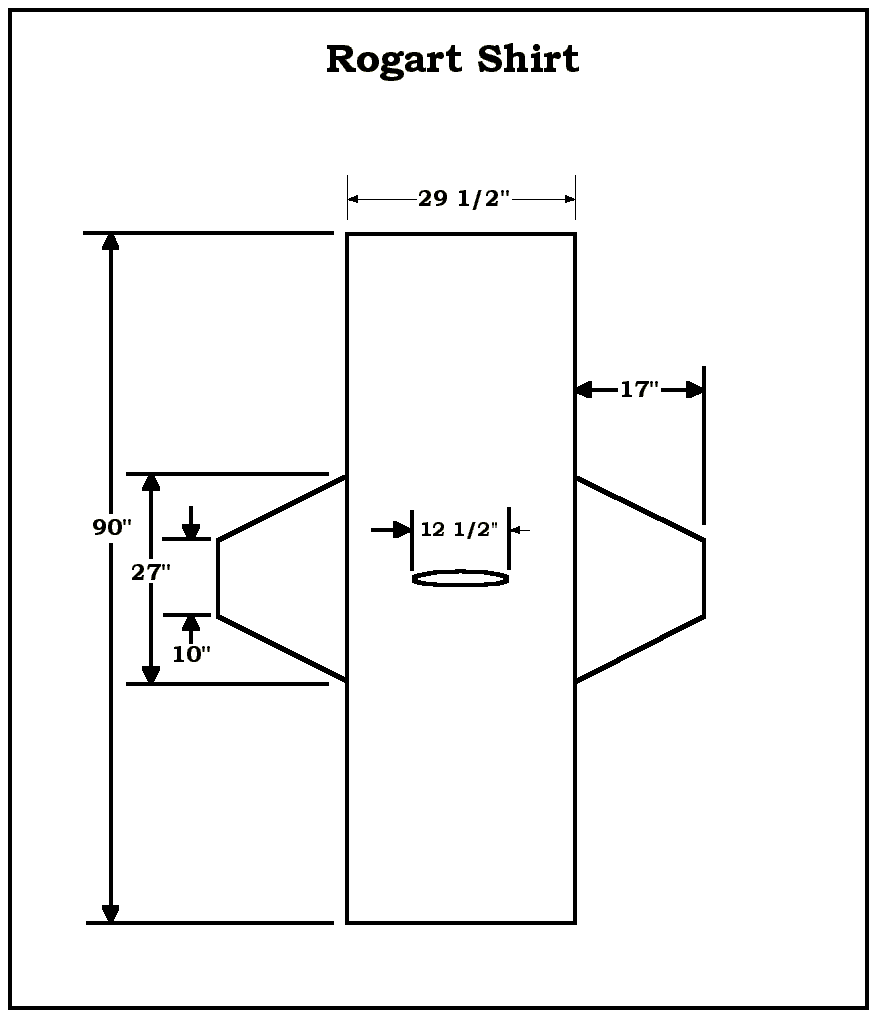
The Rogart Shirt
- Home
- Hallstat and La Tène Celts
- Ireland, 5th - 10th c. AD
-- Hair, Jewelry, etc. (Classical Celts and pre-medieval Ireland) - Late Medieval Ireland
- Medieval Scotland, 1100-1600
- Scotland, 1600-1800
-- Assembling a Basic 18th c. Woman's Outfit - Dyes
- Fiber Working Techniques
- Celtic Costume Myths and Tips
- Patterns and Resources
- Bibliography
- Recommended Reading
- Other links
A number of weaving flaws and errors in the garment indicate that this was not the garment of a wealthy person; the sleeves are sewn from several pieces of cloth pieced together, and the left sleeve is 3" longer than the right sleeve.
The garment seems to have had tufts woven into it, though they are felted and matted, and worn away in some areas. The documentation isn't very clear on where the tufts appear. The tufts average about 1/2" long. The pictures accompanying the description don't show a very thick pile; the warp and weft are visible. I can't say whether the tufts are typical of this kind of garment, but I am inclined to think that they are not, since there are no descriptions of tunic-type garments with pile woven into them from this period, and it seems to be the kind of detail that would have struck non-Scottish observers as odd and remarkable. However, this tufting technique is much like that used in some Irish mantles in the 15th/16th century and perhaps earlier. The tufts would perhaps have served to channel rain off the garment or to keep the wearer warm.
The neck opening is a slit across the width of the garment. It is blanket stitched at the corners and hemmed on the long sides.
The sleeves are pieced together of several pieces of cloth, with a seam running across the sleeve approximately near the elbow. This appears to be more due to a lack of cloth rather than for any structural reasons.
Here is a drawing of the basic dimensions of the Rogart Shirt. Details not included: seam across the sleeves, where they are pieced together; holes; fabric flaws; loops that are hidden on the inside of the garment (which are not functional but are from the selvage of the cloth). Length and width of the main body of the shirt are given in the documentation (90" long x approx. 29-1/2" wide), but the rest I have estimated based on the scale of the drawing.

Source: Audrey S. Henshall, Early Textiles Found in Scotland (see bibliography)
